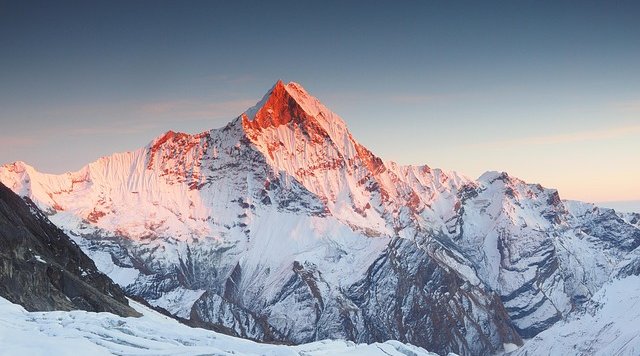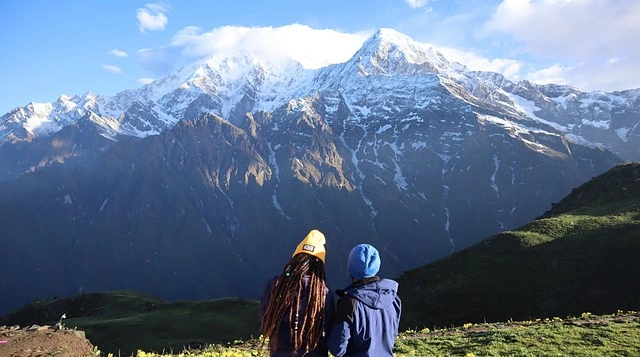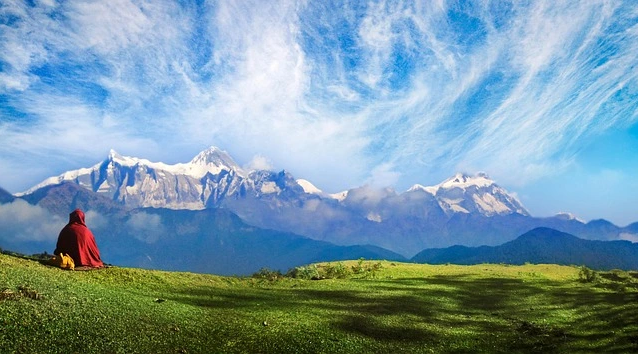Introduction
Have you ever wondered if a single trek could transform not only your physical limits but also your entire outlook on life? Imagine stepping onto a trail where each step unveils not just breathtaking vistas but also a personal journey of resilience and discovery. For thousands of trekkers every year, the expedition to Everest Base Camp (EBC) offers precisely that—a transformative experience marked by stunning landscapes, a challenging altitude, and a deep connection to nature. In this guide, we delve into the details of the Everest base camp map and elevation to help you navigate this epic journey with confidence and clarity.
In this comprehensive blog, we’ll break down everything you need to know about the route, the essential checkpoints, and practical tips tailored especially for beginners. Whether you’re setting out on your first high-altitude trek or just dreaming about one day standing at the foot of the world’s highest peak, our step-by-step guide is here to make your planning smooth and exciting.
Understanding the Everest Base Camp Experience
Everest Base Camp is not just a destination—it’s an evolving adventure that challenges you both physically and mentally. The trek provides a unique opportunity to witness the dramatic interplay of rugged mountain terrain, vibrant Sherpa culture, and pristine natural beauty. With the Everest base camp map and elevation data in hand, you can better appreciate the nuances of each stage of your journey.
The trek begins in the lower valleys of Nepal and winds its way through quaint villages, terraced fields, and lush forests. As you ascend, the landscape transforms dramatically, mirroring the changes inaltitude and climate. Detailed maps and elevation profiles help trekkers understand the gradients, predict weather changes, and prepare for the physical demands of the trail. This information is crucial, especially for beginners, as it ensures you can plan your days, pace yourself, and know when to rest.
Key Insights from the Everest Base Camp Map and Elevation Data
The Role of Maps in High-Altitude Trekking
Maps are indispensable tools for any trekker, offering not only navigation but also vital insights into the terrain. For the Everest Base Camp trek, a detailed map reveals:
- Trail Routes and Landmarks: Clearly marked trails, rest stops, and points of interest.
- Elevation Profiles: Graphical representations that show how steep or gradual the ascent is, which is critical for planning acclimatization.
- Geographical Context: Understanding the location of villages, monasteries, and natural features that add depth to your trekking experience.
Elevation Milestones to Expect on the Trek
The journey to Everest Base Camp involves significant changes in elevation. Some key elevation milestones include:
- Lukla (2,860 meters): Your gateway to the mountains, where the journey begins with an exhilarating short flight from Kathmandu.
- Namche Bazaar (3,440 meters): A bustling market town that serves as a vital acclimatization stop.
- Tengboche (3,870 meters): Known for its iconic monastery and panoramic mountain views.
- Everest Base Camp (5,364 meters): The final destination, a place where the surreal beauty of the Himalayas meets your unwavering determination.
A Step-by-Step Guide for Beginners
Embarking on a trek to Everest Base Camp may seem overwhelming at first, but breaking it down into clear, actionable steps can simplify the process. Below is a detailed step-by-step guide designed specifically for beginners.
Step 1: Preparation and Research
Plan Your Itinerary:
- Research the Route: Start by studying various maps and elevation profiles. Use resources that offer detailed insights into the Everest base camp map and elevation to understand the terrain and the distances between key milestones.
- Set a Realistic Timeline: Allocate sufficient days for the trek, including rest and acclimatization days. A typical itinerary might span 12 to 14 days, allowing your body to adjust gradually to the high altitude.
- Choose the Right Season: The best times to trek are pre-monsoon (March to May) and post-monsoon (late September to November), when the weather is stable and the views are clear.
Gear Up:
- Invest in Quality Equipment: Your gear list should include sturdy trekking boots, layered clothing, a waterproof jacket, and a good quality sleeping bag.
- Pack Essentials: Include items like a first-aid kit, high-energy snacks, and a reusable water bottle with a built-in filter.
Step 2: Building Acclimatization and Physical Fitness
Train Physically:
- Cardio and Strength Training: Start a fitness regime focusing on cardiovascular health and leg strength. Activities such as hiking, cycling, and running are excellent preparation.
- Practice Walking with a Loaded Backpack: Get accustomed to the weight you’ll be carrying during the trek.
Acclimatization Strategy:
- Pace Your Ascent: Follow the “climb high, sleep low” approach. Gradually increase your elevation each day to give your body time to adjust.
- Rest Days Are Essential: Schedule rest days in towns like Namche Bazaar, where you can take it easy and absorb the altitude changes.
.
Step 3: Mastering Navigation with the Map
Learn Basic Navigation Skills:
- Study the Map: Spend time familiarizing yourself with the contour lines and landmarks shown on your map. Understand the significance of the various elevation markers.
- Use Digital Tools: Supplement your paper map with a reliable GPS app that can track your progress and provide real-time location updates.
Navigation in Action:
- Landmark Identification: Recognize key features such as rivers, bridges, and traditional villages. These act as natural checkpoints along your journey.
- Orientation Techniques: Practice using the sun and nearby landmarks to maintain your sense of direction, even when digital devices fail.
Step 4: Daily Trek Planning and Checkpoints
Plan Your Daily Itinerary:
- Start Early: Begin your days at dawn to take advantage of cooler temperatures and better visibility.
- Set Daily Goals: Determine the distance you intend to cover each day based on the map’s elevation profiles. Aim for steady progress rather than rapid ascents.
Monitor Your Progress:
- Check Elevation Gains: Use your map to understand the altitude you’re expected to reach each day. This helps in pacing yourself and scheduling timely breaks.
- Adjust as Needed: Weather conditions or physical fatigue might require a change in plans. Flexibility is key.
Practical Tip: Keep a daily journal noting your mileage, altitude changes, and personal observations. This record not only helps you monitor progress but also serves as a valuable memory of your trek.
Step 5: Embracing Local Culture and Safety Essentials
Immerse Yourself in the Sherpa Culture:
- Interact with Locals: Engage with the Sherpa community to learn about their traditions and history. Their knowledge of the mountains is invaluable.
- Cultural Etiquette: Respect local customs, dress modestly, and learn a few phrases in the local language.
Prioritize Safety:
- Stay Hydrated and Nourished: The altitude can dehydrate you quickly, so drink water regularly and eat energy-rich foods.
- Listen to Your Body: Recognize the symptoms of altitude sickness, such as headaches or dizziness, and don’t hesitate to rest or seek help.
Practical Tip: Always carry a basic first-aid kit and a portable oxygen canister if recommended by your doctor. The Everest base camp map and elevation details will also indicate nearby health posts for emergencies.
Frequently Asked Questions (FAQs)
What Does the Everest Base Camp Map and Elevation Show?
The Everest base camp map and elevation provides a detailed overview of the trekking route, including the path’s contours, elevation gains, and key landmarks. It helps trekkers plan their journey by indicating steep sections, rest stops, and acclimatization points.
How Long Does the Trek to Everest Base Camp Usually Take?
Typically, the trek to Everest Base Camp takes between 12 to 14 days, including rest days for acclimatization. However, the exact duration can vary depending on your fitness level, weather conditions, and the specific itinerary you choose.
Do I Need Special Equipment for High-Altitude Trekking?
Yes, high-altitude trekking requires specialized gear. Essential items include quality trekking boots, layered clothing for fluctuating temperatures, a waterproof jacket, and a well-insulated sleeping bag. Additionally, carrying a first-aid kit and hydration system is crucial for managing altitude-related challenges.
Is It Necessary to Use a GPS or Digital Map Along with a Physical Map?
While a physical Everest base camp map and elevation is extremely valuable, using a digital map can provide real-time tracking and additional navigation support. Many trekkers choose to use both to ensure they have reliable backup in varying conditions.
Conclusion: Your Journey to the Roof of the World
Embarking on a trek to Everest Base Camp is a life-changing adventure that demands careful planning, dedication, and a willingness to push beyond your limits. With the right preparation, guided by detailed Everest base camp map and elevation data, even a beginner can experience the thrill and serenity of the Himalayas with confidence. From mapping out your daily progress to embracing local culture and ensuring your safety, every step is a learning opportunity that enriches both body and soul.
Are you ready to take that first step towards an unforgettable adventure? Begin your preparation today, and let your dream of trekking in the Himalayas become a reality. For more detailed guides, insider tips, and adventure planning, visit Himalayan Hero Adventure and start your journey to the roof of the world now!
Contact our expert team to customize your perfect Everest Base Camp experience:








